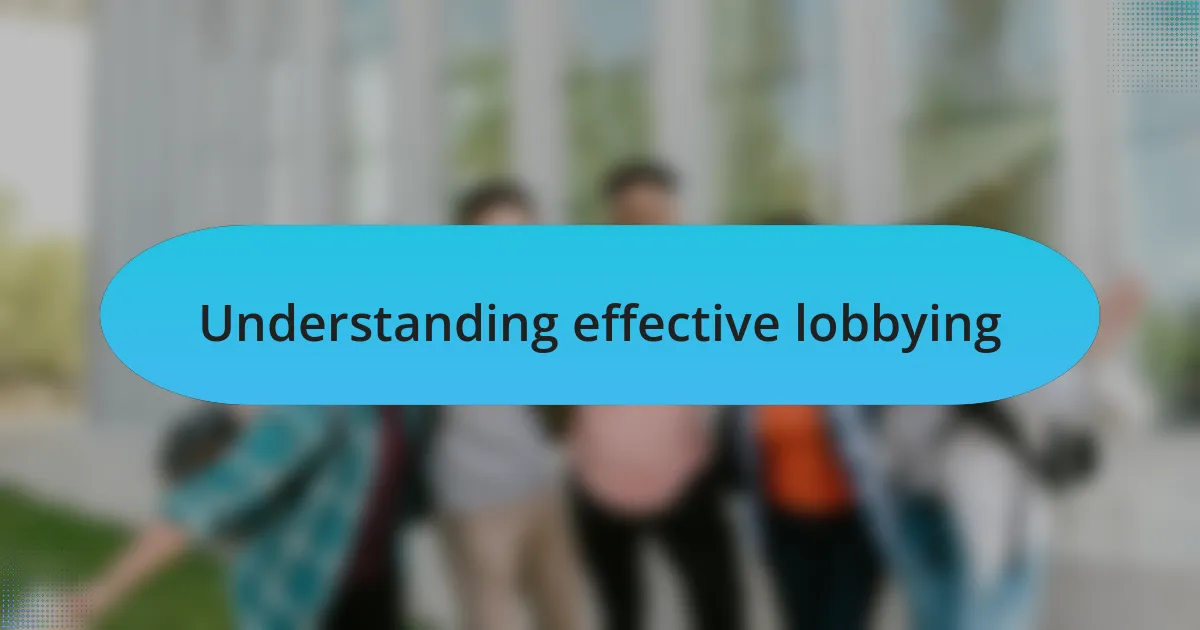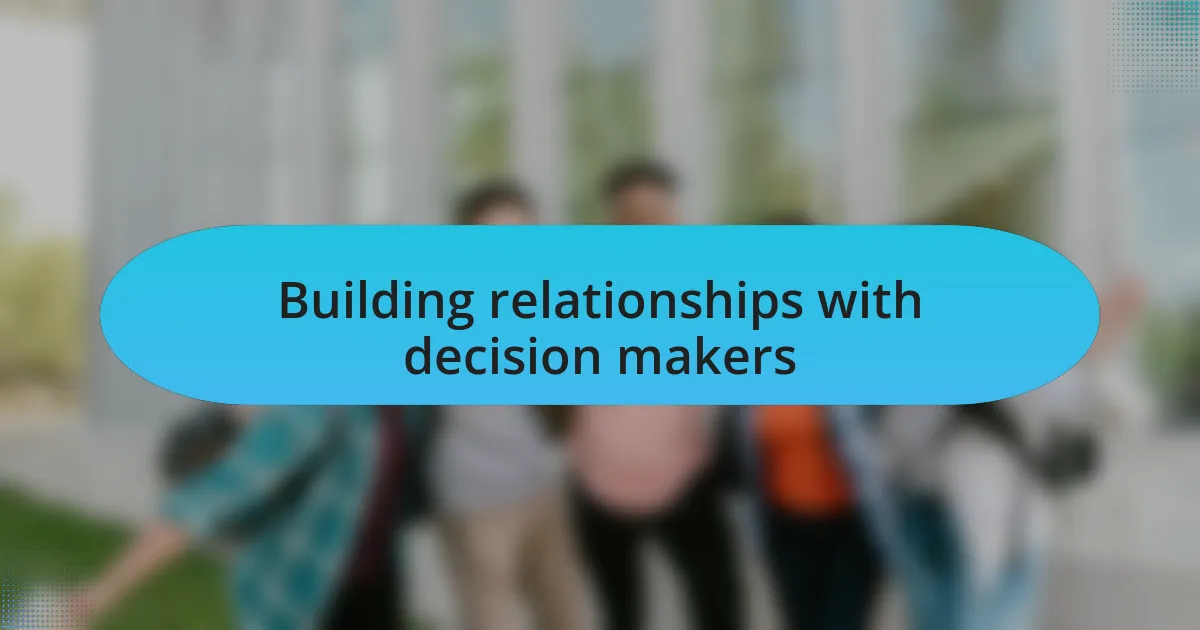Key takeaways:
- Effective lobbying requires emotional connections and personal narratives to resonate with decision-makers.
- Preparation with solid data and understanding timing can enhance the impact of lobbying efforts.
- Building genuine relationships with decision-makers fosters trust and opens up opportunities for collaboration.
- Consistent follow-up and communication are essential for maintaining relationships and keeping issues relevant.

Understanding effective lobbying
Effective lobbying goes beyond just presenting facts; it’s about connecting with people and understanding their motivations. I remember a time when I spoke to a university administrator about funding for student programs. Instead of just pushing for numbers, I shared stories from students whose lives were changed by these programs. That personal touch made a significant difference.
You might wonder, what really makes lobbying effective? From my experience, it often comes down to building relationships. It’s not just about knowing the right data but also crafting a narrative that resonates with decision-makers. When I approached local officials to support our union’s initiatives, I found that establishing rapport first opened many doors.
Emotional appeal plays a crucial role, too. Think about it: when was the last time you felt moved by a statistic alone? In one meeting, I shared a heartfelt story of a student who struggled to find housing. This connection shifted the conversation and prompted real action. Understanding the human element in lobbying can transform a simple request into a powerful call for change.

Key strategies for successful lobbying
One effective strategy for successful lobbying is to be well-prepared with facts and data that support your cause. I recall preparing for a crucial meeting where we sought support for mental health resources on campus. I compiled statistics about the increasing number of students seeking mental health services and the positive outcomes of providing these resources. This preparation allowed me to confidently present a compelling case, making it harder for decision-makers to ignore the need.
Another vital component is timing. It’s essential to know when to approach stakeholders, especially during budgeting periods or when new policies are being developed. For instance, I remember the urgency I felt as the university planned its annual budget. I reached out to key decision-makers just before the meeting, emphasizing the immediate need for more study spaces. They were more receptive at that moment, understanding the implications of their decisions.
Connecting with a coalition can amplify your efforts. In my experience, I found that partnering with other student organizations created a stronger voice. During a campaign for better dining options, we joined forces with the environmental club to advocate for sustainability. This collaboration not only broadened our reach but also demonstrated that there was widespread support for the change we were seeking. Have you considered who else might share your goals? Finding allies can significantly enhance the impact of your lobbying efforts.

Building relationships with decision makers
Building relationships with decision makers is an art that goes beyond mere advocacy. I’ve experienced firsthand how valuable it is to invest time in understanding the people behind the titles. For instance, I made a point of having coffee with a university administrator regularly; I learned about their priorities and challenges. This not only helped me tailor my requests but also established a foundation of trust.
One thing I’ve noticed in my journey is that authentic conversations often lead to unexpected opportunities. During a casual discussion about campus facilities, I discovered a shared passion for student wellness with a member of the board. This connection turned that conversation into a pivotal moment, leading to a joint initiative that not only addressed facilities but also enhanced student engagement. Have you taken the time to connect beyond the formalities? Building rapport transforms decision makers from distant figures into partners in progress.
Additionally, following up and staying in touch is crucial yet often overlooked. I remember sending a thank-you note after a meeting where we discussed proposed changes to campus safety. I didn’t just express gratitude; I included a summary of our discussion and the next steps. This not only showed my appreciation but kept the momentum going. How do you maintain your connections after the initial discussions? Consistent communication solidifies relationships and keeps your issues on their radar.